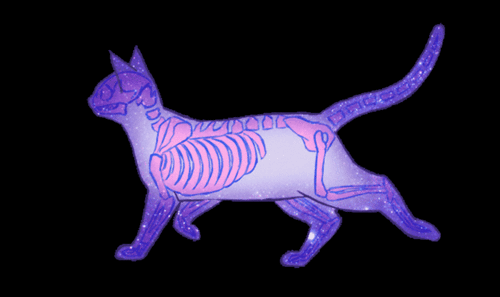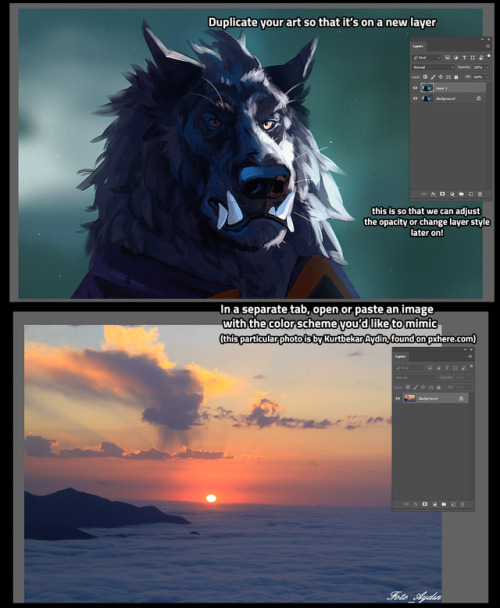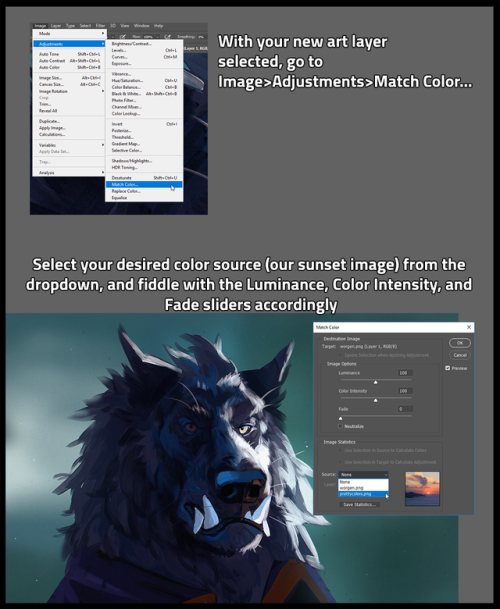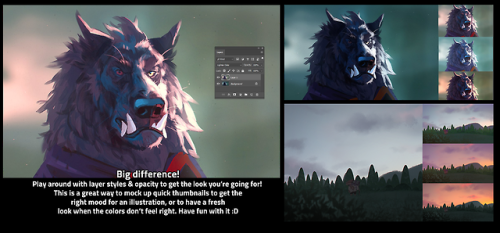Chelsychacon - The Art Of Chelsy Chacon

More Posts from Chelsychacon and Others









Concept art by Ryan Church for REVENGE OF THE SITH (2005).





I’m sure a ton of people already know how to do this, but I only learned recently, so I wanted to share one of my favorite thumbnailing tricks! Color matching is SUPER helpful to quickly map out potential color schemes :D
[EDIT] this is in Adobe Photoshop, sorry for forgetting to mention that!
one art trick i learned in college that i dont think i see being talked about online that often: measure things out using your pencil & fingers
like bring up your pencil as a straight edge to figure out the angle of certain things- if this is IRL hold it up to line up to where the objects angle is, if its on your screen line it up to the screen like this

and, this way you can also figure out relative distances

for instance here, the distance between dafoe's eyebrow and hairline here (on that line) is the same as the distance between his chin and the collar of his shirt at a different angle. by using a straight~ish "line" of an object like a pencil or your finger, it's easier to have a visual reference to track how far apart these things are.
you can also multiply these or use halves to a similar effect- for instance, dafoes shoulder here is 2 1/2 of his forehead, approximately

this way- when you're doing a study or using a reference, you can check to see if these relative distances are the same in your own drawing. this way, you can really maximize your studies and make sure you're art is relatively proportionally accurate to your reference image.
Hey this is kind of miscellaneous, but as a replacement for fanboy/fangirl, i coined fanby (alt spelling: fanbie or fanb) and fanenby (alt spelling: fanenbie). Distinctly queer, as it's derived from nb/enby (nonbinary), but can be used as a gender-neutral term as well. Can be used as a direct replacement for either fanboy or fangirl (i.e. used as a noun, verb, wherever fanboy/fangirl would go)
New words are always welcome :) added!



"Être dans une paranoïa est comme l'obscurité, avec beaucoup de voix ennuyeuses qui vous parlent et vous ne savez pas quoi faire, mais écouter ta voix me guide sur un chemin pour aller là-bas et comprendre les choses, voir ce chemin vous fait revenir à la vie , courez et sachez que vous pouvez sortir." . . . . #chelsychaconocwarrenreddington #illustration #artistoninstagram #tattoo #visdev #visualdevelopment #characterdesign #storytelling #cartoon #fantasy #flowers #minimalism #art #illustrator #animation #ink #cartoon #childrenillustration #manga #nakamuraasumiko #asumikonakamura #contrast #design #graphicdesign #arttimelapse #timelapse #arttutorial https://www.instagram.com/p/BrY8UDIhgg4/?utm_source=ig_tumblr_share&igshid=j9cu0sns518d







Book and magazine illustration was historically an environment very populated by women in times in which they weren’t allowed the same room for artistic education, exposure and professional careers as cis men artists. Even though the Golden Age of illustration brings usually the names of the “fathers” of the artform, many women developed artistic styles that added new significance to storytelling. Still, it’s important to note that the environment was still a place of great privilege and only few women (especially white women with enough means) were able to find sustainable work in the industry in the XIX and early XX century. Some of the women showcased here became historically relevant many years after they passed, having awards named after them, becoming firsts to enter artistic halls of fame, creating networks for employment that outlived them, and being included in “gay-themed history tours” that recognized their lives, among many other legacies.
These are the few artists showcased here: Eleanor Vere Boyle (1825-1916), Josephine Pollard (1834-1892), Kate Greenaway (1846-1901), Alice Bolingbroke Woodward (1862 — 1951), Jessie Willcox Smith (1863 – 1935), Isobel Lilian Gloag (1865–1917), Helen Stratton (1867-1961), Elizabeth Shippen Green (1871 – 1954), Violet Oakley (1874 – 1961), Anne Anderson (1874 — 1952), Jessie M. King (1875—1949), Elenore Plaisted Abbott (1875–1935), Ruth Mary Hallock (1876-1945), Florence Susan Harrison (1877-1955), Mabel Lucie Attwell (1879-1964), Rie Cramer (1887-1977), Margaret Tarrant (1888-1959), Ida Rentoul Outhwaite (1888—1960), Dorothy P. Lathrop (1891—1980), Cecile Walton (1891—1956), Margaret Tempest (1892-1982), Wanda Gág (1893-1946), Jennie Harbour (1893-1959), Virginia Frances Sterrett (1900—1931), Adrienne Segur (1901-1981), Janet Grahame Johnstone (1928 – 1979) and Anne Grahame Johnstone (1928 – 1998), Trina Schart Hyman (1939-2004) and Kinuko Y. Craft (1940).

EDIT:
It has come to my attention that this post has been reblogged by some terf blogs (I’ve already blocked). Make no mistake, I don’t welcome terfs on my posts (or my blog, for that matter).
In my intention to share some of the artists I was studying during March 8th, I didn’t realize that people could take my inclusion of these often forgotten artists as an exclusion of others. The fact that trans illustrators and visual artists in history haven’t been as acknowledged as cis artists doesn’t mean they weren’t there, it’s a reflection of how systematic gender oppression acts on history and what it upholds.
It was my mistake to not see that this selection could imply exclusion, and even if not my intention, it’s not a possibility I’m willing to let people entertain. Therefore, I added now some trans visual artists and illustrators who were contemporary to the ones I included prior: Lili Elbe (1882-1931), Ovartaci (1894 – 1985), Anton Prinner (1902-1983), Michel Marie Poulain (1906-1991), Jeffrey Catherine Jones (1944-2011), El Kazovsky (1948-2008).
I also want to include a couple of resources on current trans inclusive platforms that house artists through history as well as current illustrators that you can check out right now:
Queer Art History: curated currently by Baylee Woodley (she/her/hers or they/them/theirs), this site includes a category on Transgender & Gender Non-Conforming art, which goes through different historical periods and mediums.
Women Who Draw: this directory and platform is trans-inclusive, it also houses trans and gender non-conforming illustrators currently working.
If you want to include more artists, you’re welcome to do so!
-
 decayinginred liked this · 2 weeks ago
decayinginred liked this · 2 weeks ago -
 false-hydra reblogged this · 2 weeks ago
false-hydra reblogged this · 2 weeks ago -
 lulisbae reblogged this · 2 weeks ago
lulisbae reblogged this · 2 weeks ago -
 adriftinthereverie reblogged this · 3 weeks ago
adriftinthereverie reblogged this · 3 weeks ago -
 itsdarkinsid3 reblogged this · 3 weeks ago
itsdarkinsid3 reblogged this · 3 weeks ago -
 itsdarkinsid3 liked this · 3 weeks ago
itsdarkinsid3 liked this · 3 weeks ago -
 that-annoying-bitch liked this · 3 weeks ago
that-annoying-bitch liked this · 3 weeks ago -
 brandon80s reblogged this · 4 weeks ago
brandon80s reblogged this · 4 weeks ago -
 just-below-the-clouds reblogged this · 4 weeks ago
just-below-the-clouds reblogged this · 4 weeks ago -
 long-lasting-memories reblogged this · 4 weeks ago
long-lasting-memories reblogged this · 4 weeks ago -
 youjustneedtostaystrong reblogged this · 4 weeks ago
youjustneedtostaystrong reblogged this · 4 weeks ago -
 like-aflowingwind reblogged this · 4 weeks ago
like-aflowingwind reblogged this · 4 weeks ago -
 duckandcover liked this · 4 weeks ago
duckandcover liked this · 4 weeks ago -
 akinetonsworld reblogged this · 4 weeks ago
akinetonsworld reblogged this · 4 weeks ago -
 a-freak-like-me-42 reblogged this · 4 weeks ago
a-freak-like-me-42 reblogged this · 4 weeks ago -
 rxeject reblogged this · 4 weeks ago
rxeject reblogged this · 4 weeks ago -
 myworldtimi liked this · 4 weeks ago
myworldtimi liked this · 4 weeks ago -
 llegolilz3us liked this · 4 weeks ago
llegolilz3us liked this · 4 weeks ago -
 raptinsound liked this · 4 weeks ago
raptinsound liked this · 4 weeks ago -
 laragazza-che-odialagente reblogged this · 4 weeks ago
laragazza-che-odialagente reblogged this · 4 weeks ago -
 theskanderbeg reblogged this · 4 weeks ago
theskanderbeg reblogged this · 4 weeks ago -
 deilsonluz liked this · 4 weeks ago
deilsonluz liked this · 4 weeks ago -
 unknwn-nth reblogged this · 4 weeks ago
unknwn-nth reblogged this · 4 weeks ago -
 unknwn-nth liked this · 4 weeks ago
unknwn-nth liked this · 4 weeks ago -
 elektrostantsiya liked this · 1 month ago
elektrostantsiya liked this · 1 month ago -
 badegal liked this · 1 month ago
badegal liked this · 1 month ago -
 nostalgicmiddleearth liked this · 1 month ago
nostalgicmiddleearth liked this · 1 month ago -
 illfritese liked this · 1 month ago
illfritese liked this · 1 month ago -
 abyssus-aeterna liked this · 1 month ago
abyssus-aeterna liked this · 1 month ago -
 ophtot reblogged this · 1 month ago
ophtot reblogged this · 1 month ago -
 rah11dongsongposts reblogged this · 1 month ago
rah11dongsongposts reblogged this · 1 month ago -
 gloryfalling liked this · 2 months ago
gloryfalling liked this · 2 months ago -
 theplushfrog reblogged this · 2 months ago
theplushfrog reblogged this · 2 months ago -
 halfling-story reblogged this · 2 months ago
halfling-story reblogged this · 2 months ago -
 redtailcatfish reblogged this · 2 months ago
redtailcatfish reblogged this · 2 months ago -
 werewolfnotcisnse liked this · 2 months ago
werewolfnotcisnse liked this · 2 months ago -
 halfling-story liked this · 2 months ago
halfling-story liked this · 2 months ago -
 allulily liked this · 2 months ago
allulily liked this · 2 months ago -
 goudzwart liked this · 2 months ago
goudzwart liked this · 2 months ago -
 namida713 liked this · 2 months ago
namida713 liked this · 2 months ago -
 rarepairqueer reblogged this · 2 months ago
rarepairqueer reblogged this · 2 months ago -
 rarepairqueer liked this · 2 months ago
rarepairqueer liked this · 2 months ago -
 bored-gay-werewolf reblogged this · 2 months ago
bored-gay-werewolf reblogged this · 2 months ago -
 bored-gay-werewolf liked this · 2 months ago
bored-gay-werewolf liked this · 2 months ago -
 stars-below reblogged this · 2 months ago
stars-below reblogged this · 2 months ago -
 thewolfofthestars liked this · 2 months ago
thewolfofthestars liked this · 2 months ago -
 a-polite-melody reblogged this · 2 months ago
a-polite-melody reblogged this · 2 months ago -
 gregorytheblue liked this · 2 months ago
gregorytheblue liked this · 2 months ago

| Visual Developer, Character Designer & Illustrator | Feel free to contact me chelsychacon@gmail.com
224 posts



